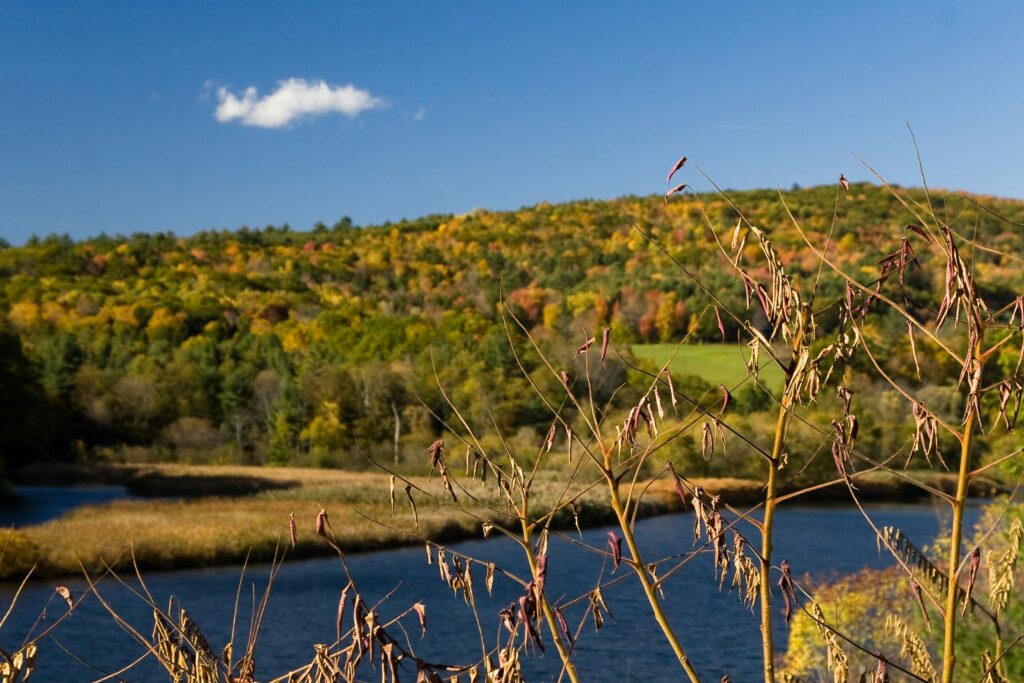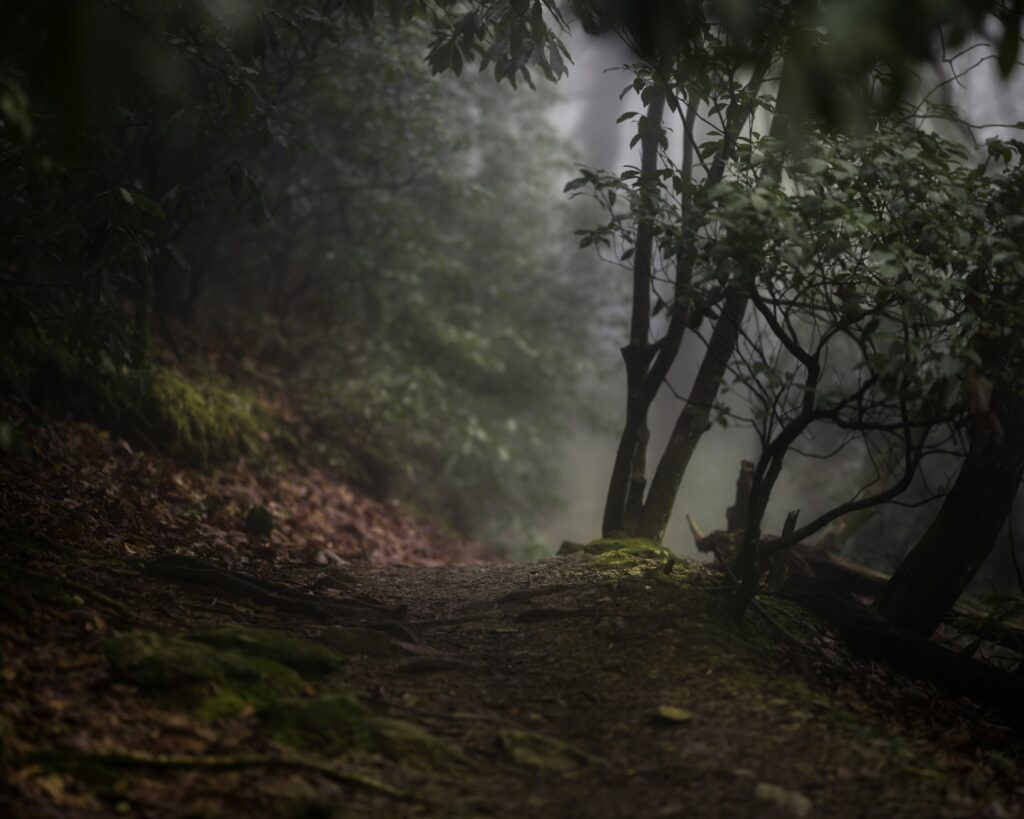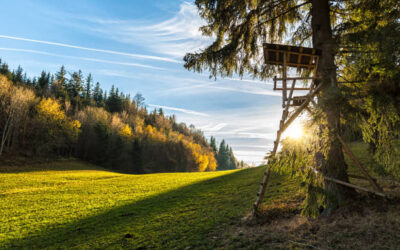In the vast and varied landscapes of the United States, hiking stands out as one of the most cherished activities for adventure seekers and nature lovers alike. From the majestic peaks of the Rocky Mountains to the serene forests of the Appalachian Trail, there’s no shortage of breathtaking trails to explore. However, with the rising popularity of hiking, many of these well-known paths have become increasingly crowded, diminishing the sense of solitude and connection with nature that many hikers crave. This is where the hidden gems of the U.S. hiking scene come into play—lesser-known trails that offer equally stunning vistas and experiences but without the crowds.
The purpose of this guide is to shine a light on these overlooked paths, providing avid hikers and outdoor enthusiasts with new adventures to embark upon. By venturing off the beaten path, you’ll not only discover unique landscapes and untouched natural beauty but also contribute to the preservation of popular trails that are experiencing the wear and tear of heavy foot traffic. Let’s delve into the world of lesser-known hiking trails across the U.S., exploring what to expect, how to prepare, and why these trails deserve more attention.
Benefits of Hiking Lesser-Known Trails
- Solitude and Peace: One of the most compelling reasons to explore lesser-known trails is the solitude they offer. Hiking in quieter areas means you’re less likely to encounter large groups of people, allowing for a more meditative and introspective experience. The silence of the wilderness can be truly rejuvenating, providing a much-needed escape from the hustle and bustle of daily life.
- Untouched Nature: Lesser-known trails often lead through some of the most pristine and undisturbed natural settings. These areas are less impacted by human activity, offering a chance to see wildlife in their natural habitat and landscapes that remain unspoiled. Hiking these trails gives you a front-row seat to the raw beauty and diversity of the U.S. wilderness.
- Unique Landscapes: While iconic trails take you to well-photographed vistas, lesser-known paths can surprise you with unexpected sights and unique geological features. These trails might lead you to hidden waterfalls, secluded lakes, or rare rock formations not found in guidebooks, making your hike a truly unique adventure.
- The Thrill of Exploration: There’s something inherently exciting about setting foot on a trail that fewer people have traveled. It sparks a sense of adventure and discovery, allowing you to create your own path and perhaps even contribute new information about these lesser-known areas to the hiking community.
- Contribution to Conservation: By choosing to hike lesser-known trails, you’re also helping to alleviate the pressure on heavily trafficked areas, contributing to the conservation of popular spots that are struggling to cope with the impact of excessive foot traffic. It’s a way to enjoy the great outdoors responsibly, ensuring that these natural wonders remain intact for future generations to explore.
How to Prepare for Hiking Lesser-Known Trails
Exploring lesser-known trails requires a bit more preparation than your average hike. The paths less traveled often lack the clear markings and amenities found on more popular trails, making self-reliance and thorough preparation crucial. Here’s how you can gear up for a safe and enjoyable adventure into the less charted parts of the wilderness.
Research and Planning
- Know Before You Go: Start with detailed research about the trail. Look for recent trip reports, maps, and any available information about the trail conditions, wildlife activity, and weather forecasts. This information will help you understand what to expect and how to prepare.
- Permits and Regulations: Check if the area you’re planning to hike in requires permits or has specific regulations, such as fire bans or bear-proof container requirements. Respecting these regulations not only ensures your safety but also helps in the conservation efforts of these natural areas.
- Emergency Contacts: Always let someone know your hiking plan, including the trail name, your expected return time, and any other important details. This step is crucial for your safety, especially when venturing into less frequented areas.
Gear and Supplies
- Navigation Tools: Since lesser-known trails might not be well-marked, carrying a detailed map, compass, and GPS device (or a smartphone with a GPS app) is essential. Make sure you know how to use them before you hit the trail.
- The Ten Essentials: Pack the Ten Essentials for outdoor survival, including navigation tools, sun protection, insulation (extra clothing), illumination (headlamp/flashlight), first-aid supplies, fire-starting tools, repair kit and tools, nutrition (extra food), hydration (extra water), and emergency shelter (tent/plastic tube tent).
- Appropriate Footwear and Clothing: Choose footwear that’s appropriate for the terrain. Also, dress in layers to easily adapt to changing weather conditions, and consider moisture-wicking fabrics to keep you dry and comfortable.
Leave No Trace Principles
Practicing Leave No Trace: Familiarize yourself with the Leave No Trace principles to minimize your impact on the environment. This includes planning ahead, disposing of waste properly, leaving what you find, minimizing campfire impacts, respecting wildlife, being considerate of other visitors, and traveling and camping on durable surfaces.
Safety and Risk Management
- Wildlife Encounters: Educate yourself about the wildlife you might encounter and how to safely observe or react to them. This could include bears, snakes, or other local wildlife, depending on the region.
- First Aid and Emergencies: Carry a first-aid kit and know the basics of wilderness first aid. Understanding how to respond to common injuries or illnesses on the trail is crucial, especially when help may be hours or days away.
- Water Treatment: Bring enough water or have a means to treat water using a filter, purification tablets, or boiling. Ensuring you have access to safe drinking water is critical for avoiding dehydration and waterborne illnesses.
By meticulously planning your hike on a lesser-known trail, you’re setting the stage for a rewarding and memorable adventure. With the right preparation, you can confidently explore the hidden corners of the wilderness, enjoying the serenity and beauty that comes with getting off the beaten path.
Featured Lesser-Known Hiking Trails
Embarking on a journey through America’s lesser-known trails offers a unique opportunity to experience the tranquility, beauty, and adventure that lie off the beaten path. Here, we highlight some hidden gems across different regions of the U.S., each offering its own unique appeal to those seeking solitude and connection with nature.
Northeast: The Whispering Woods Trail, Vermont
- Distance and Difficulty: 6 miles, moderate
- What to Expect: The Whispering Woods Trail winds through dense forests of maple and birch, opening up to breathtaking views of the Green Mountains. Hikers can enjoy the serene sounds of hidden brooks and the sight of wildlife, including deer and various bird species.
- Why It Deserves More Attention: This trail offers a peaceful retreat into nature, with vibrant wildflowers in spring and a stunning display of fall foliage. It remains relatively undiscovered, providing a perfect escape for those looking to avoid the crowds.
- How to Get There: The trailhead is located near the small town of Maple Ridge, accessible via a short drive from Burlington. Parking and trail maps are available at the entrance.

Midwest: The Lost Canyon Trail, Missouri
- Distance and Difficulty: 4 miles, easy to moderate
- What to Expect: Nestled in the heart of the Ozarks, the Lost Canyon Trail features dramatic limestone bluffs, deep green canyons, and cascading waterfalls. The path is well-maintained but lightly trafficked, offering a tranquil hiking experience.
- Why It Deserves More Attention: Its unique geological formations and the chance to explore caves along the route make it a fascinating hike for geology enthusiasts and adventure seekers alike.
- How to Get There: The trailhead is just outside of Branson, with signs directing hikers from the main road. A small parking lot is available.

South: The Blue Haze Trail, Georgia
- Distance and Difficulty: 8 miles, moderate to difficult
- What to Expect: Traversing the lesser-known parts of the Appalachian foothills, the Blue Haze Trail offers stunning panoramic views, dense forest sections, and wildflower meadows. The trail’s name comes from the bluish mist that often settles over the hills at dawn and dusk.
- Why It Deserves More Attention: This trail provides a challenging but rewarding experience, with few hikers and plenty of solitude. It’s perfect for those looking to immerse themselves in the natural beauty and quiet of the Georgia wilderness.
- How to Get There: Located near the town of Ellijay, the trailhead can be accessed by a forest service road, with parking available at the start of the trail.

West: The Sunset Cliffs Trail, Oregon
- Distance and Difficulty: 5 miles, moderate
- What to Expect: This coastal trail offers dramatic views of the Pacific Ocean, rugged cliffs, and the chance to see migrating whales during certain times of the year. The path leads through dense coastal forests and opens up to expansive ocean vistas.
- Why It Deserves More Attention: The Sunset Cliffs Trail is a hidden jewel for those seeking breathtaking ocean views without the crowds found at more popular coastal trails. Its sunset views are unparalleled, making it a perfect evening hike.
- How to Get There: The trailhead is located just outside the small coastal town of Newport. Parking is available at a designated lot near the trail’s entrance.
Each of these trails represents just a fraction of the hidden wonders waiting to be discovered across the United States. By seeking out these lesser-known paths, hikers can enjoy the beauty and tranquility of nature away from the crowds, creating memorable adventures that inspire a deeper appreciation for the great outdoors.

Safety Tips for Exploring Lesser-Known Trails
- Inform Someone of Your Plans: Always let a friend or family member know where you’re going and when you expect to return. Provide them with details of your planned route and any alternate paths you might take.
- Stay on the Trail: Lesser-known trails can sometimes be less clearly marked. Pay close attention to trail markers and maps to avoid getting lost. Staying on the trail also helps protect the surrounding ecosystem.
- Be Wildlife Wise: Learn about the wildlife you may encounter on your hike and how to behave safely around them. Keep a safe distance, store food securely, and know what to do in the unlikely event of an encounter.
- Pack Essentials and Emergency Gear: Carry the Ten Essentials, including extra food and water, navigation tools, a first-aid kit, and emergency shelter. Even on a short day hike, being prepared for unexpected overnight stays can be lifesaving.
- Weather Awareness: Check the weather forecast before you set out and be prepared for changing conditions. Sudden weather changes can make trails more challenging and dangerous.
- Physical Preparedness: Ensure you’re physically prepared for the trail’s difficulty. Start with shorter or less challenging hikes and gradually build up to more demanding trails.
- Emergency Response Plan: Know basic first aid and how to respond to potential emergencies. Carry a charged phone for emergencies, though be aware that service may be limited or nonexistent.
Exploring lesser-known trails offers a unique adventure into the heart of nature, away from the crowds. It’s a chance to experience solitude, witness untouched beauty, and discover the road less traveled. However, with the privilege of enjoying these hidden gems comes the responsibility of preparing adequately and respecting the natural environment. By following safety guidelines, staying informed, and practicing Leave No Trace principles, hikers can ensure these trails remain pristine for future adventurers.
As we venture out to explore these lesser-known paths, let’s remember the importance of conservation and the role each of us plays in preserving the beauty of the wilderness. So, lace up your boots, pack your gear, and set out on an adventure to explore the hidden corners of the U.S. hiking scene. The trails less traveled are waiting to reveal their secrets to those willing to seek them out.
Additional Resources
- National Park Service (NPS): Provides detailed information on trails in national parks, including lesser-known paths. NPS Website
- Leave No Trace Center for Outdoor Ethics: Offers guidelines for minimizing your impact on the natural environment. Leave No Trace Website
- AllTrails: A comprehensive resource for finding trails, reading reviews, and checking trail conditions. AllTrails Website
- American Hiking Society: Offers tips for safe hiking and information on preserving hiking trails. American Hiking Society Website
- REI Expert Advice: Provides articles, videos, and gear lists to help prepare for hikes of all difficulties. REI Expert Advice
By leveraging these resources, you can enhance your hiking knowledge, contribute to the conservation of natural spaces, and ensure your adventures are safe and rewarding. Happy trails!




0 Comments